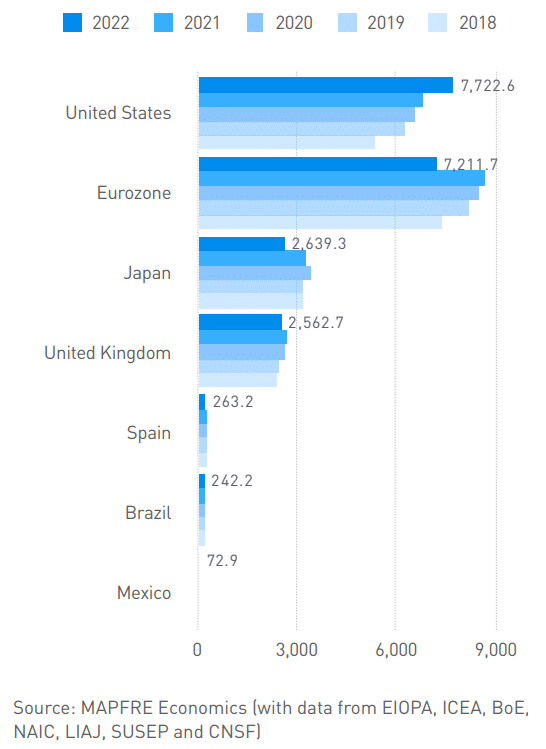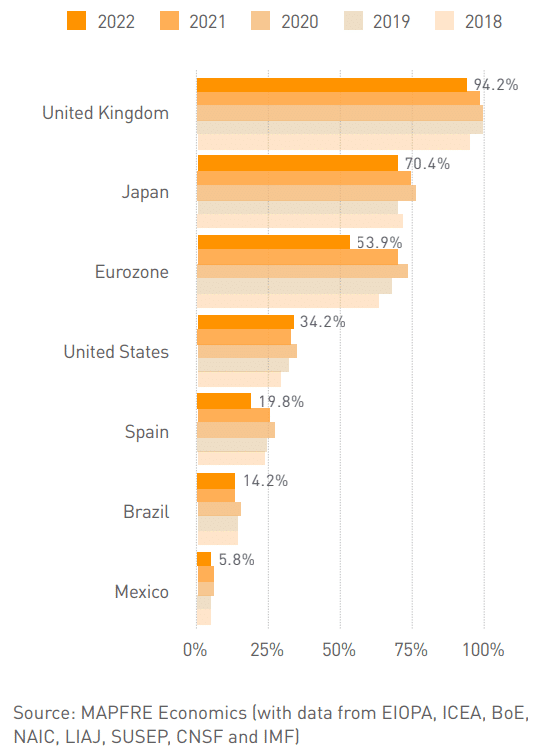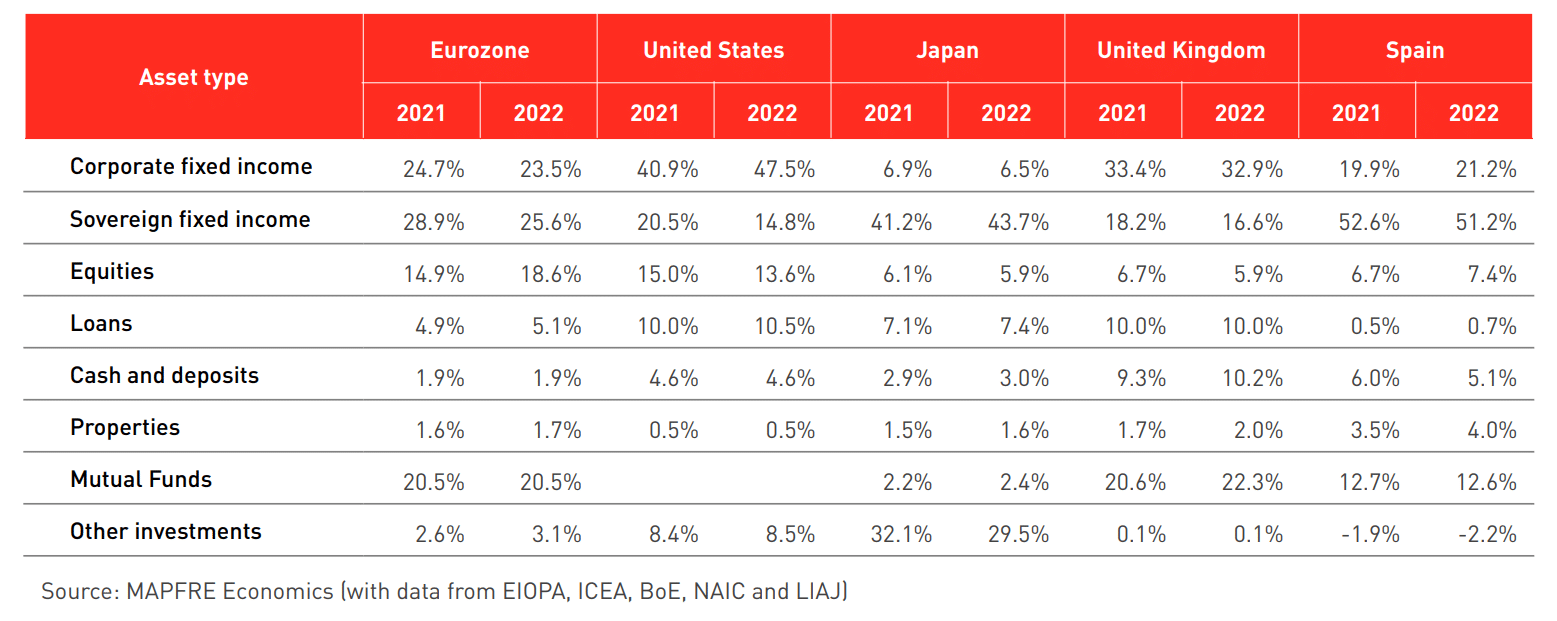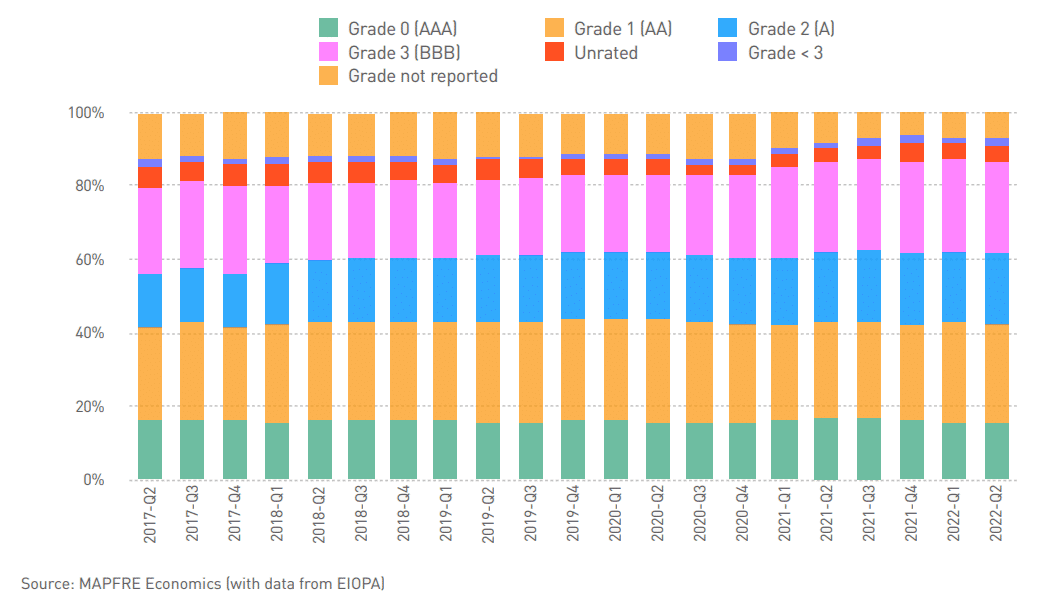Investment Allocation in the Insurance Industry
Author: MAPFRE Economics
Summary of the conclusions of the
MAPFRE Economics report
Global Savings and Insurance Industry Investments
Madrid, Fundación MAPFRE, June 2023
Composition of the investment portfolio of insurance companies during monetary normalization
As shown in Charts 1 and 2, the insurance industry registered in 2022 the first aggregate decrease in its investments in recent years, affecting both their volume and proportion with respect to GDP. The decline was caused by steep interest-rate hikes due to the monetary tightening cycle, a response to soaring inflation and its persistence over time. However, as an exception, in the U.S. insurance market, the dollar’s appreciation against the euro had a positive impact, causing the net value of investments to increase when converted to euros.
Chart 1. Selected markets: investments managed by the insurance industry, 2018-2022 (billions of euros)

Chart 2. Selected markets: investments managed by the insurance industry compared with GDP, 2018-2022 (% of GDP)

In previous years, the economic environment caused investment portfolios to show gains with the help of various economic support programs introduced by central banks, which maintained ultra-lax interest rates and implemented asset purchasing programs on the balance sheet side, together with broad fiscal stimulus programs introduced by governments. However, in 2022, the imbalances in the real economy generated by these programs became patently clear, setting the stage for emerging inflation that was initially seen as transitory, but that intensified over time due to the subsequent string of supply-side shocks. Inflation thus became more persistent than anticipated, triggering a change in the orientation of monetary policy towards tightening and prompting central banks to accelerate their interest rate hikes and shrink their balance sheets. As a result, significant impairments were registered in insurance companies’ investment portfolios, and particularly in longer-term fixed income portfolios.
A comparative analysis of the major global insurance markets shows the latest dynamics within the investment portfolios in the main economies worldwide (see Table 1). In general, the industry’s investments remain concentrated in fixed income (corporate and sovereign) due to the insurance business model, which requires the use of liability-driven investment strategies in order to correctly match terms, currencies, and interest rates between the liabilities assumed and the underlying investment instruments, relying on assets with high credit ratings. This highlights the exceedingly conservative profile of insurance companies when it comes to investing.
Table 1. A structural breakdown of traditional business investment portfolios, 2021–2022
( %)
The pre-pandemic environment was characterized by stagnant growth rates and low inflation, a downward potential growth horizon, and expansive economic policy prescriptions, with monetary policy having a stronger role. In this situation, low nominal yields prevailed, and a high appetite for risk became widespread as a formula to maintain certain levels of profitability As a counterpart, the regulation threshold has been progressively gaining influence, becoming a stronger mechanism for risk management.
In the current environment, characterized by high inflation, accelerated interest rate hikes, and the quantitative easing programs of central banks, risk perception has emerged as a differential element, as reflected by the crises affecting regional banks in the United States, or the defined benefit pension schemes in the United Kingdom. Although the financial environment was adverse throughout 2022, with more episodes of volatility, corrections in the valuation of main asset categories, and a decline in the distribution of returns, the investment structure has remained relatively stable in high-quality assets (see Chart 3). This is reflected in the evolving European composition, which has maintained a strong solvency position with the help of a regulatory framework based on appropriate risk management that has proven effective at times of economic and financial tension in recent years.
Chart 3. Credit quality of the bond portfolio
(%)
The full analysis can be found in the report Global Savings and Insurance Industry Investments, prepared by MAPFRE Economics and available at the following link:






